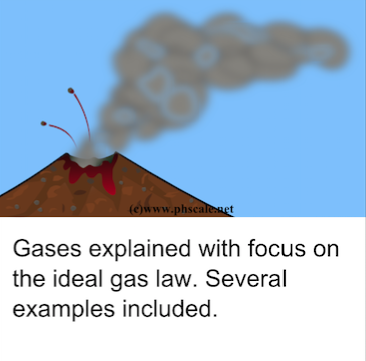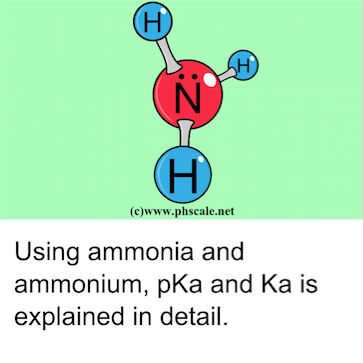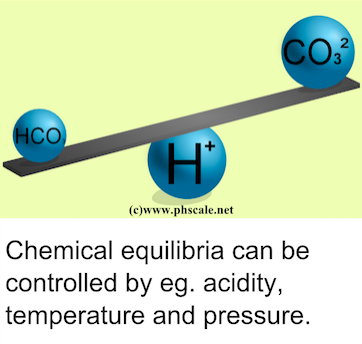Chemical compounds in aqueous solutions are fairly easy to handle as their quantities can either be expressed in weight such as grams or kilos, moles perliter (molarity) or moles per kg (molality).
Topic:pKa& Ka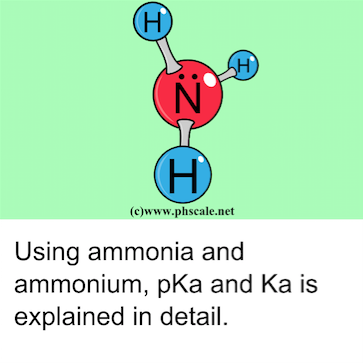 | The basics |
For gases it is a bit more complicated. In order to determine how much gas is present in some air volume, both temperature and pressure must be known.In some cases, not considered here, a factor such as buoyancy also has to be considered. The ideal gas law is frequently used equation (1) relatingpressure (p), volume (V), number of moles (n), the universal gas constant (R) and the temperature in Kelvin (T) to one another.
(1)p.V = n.R.T
Gases that behave according to eq. 1 are called ideal gases. So if (1) is true for a gas, the gas is said to behave ideally. However, gases are notbehaving ideally; they are behaving ideally to a large extent, so in most cases the ideal gas law can be used for routine computations involving gases.In high-pressure situations and at very low temperatures, the ideal gas law should not be used.
To better understand how the ideal gas law is used, some examples have been constructed for consideration:
Topic:Equilibriums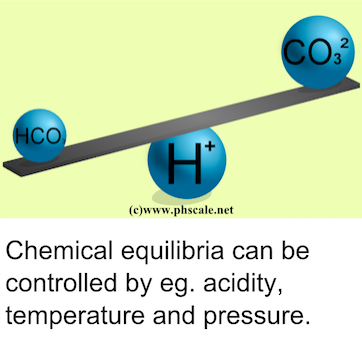 | The pH scale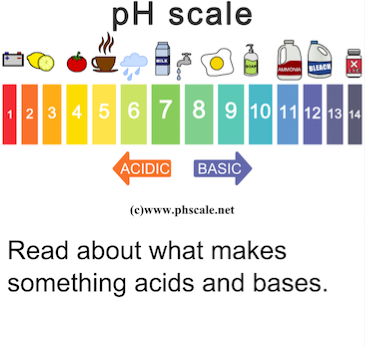 |
Example 1.
In a 1.5 Liter volume, the pressure of Argon(g) is 18000 ppm at 42oFahrenheit. How many moles of Argon are there in the 1.5 L?
Answer:
Preliminary consideration: 18000 ppm is 18000/1000000 or 0.018 Atm; R is 0.08206 L.atm.K-1.mol-1and the temperature, 42 degrees Fahrenheit is 5/9*(42+459,67) or 279oKelvin.
This information is entered into eq.1:
0.018.1.5 = n.0.08206.279
To isolate n, the number of moles, we divide this equation by 0.08206.279 on both sides of the equation. This yields that the number ofmoles is 0.00179 or 1.179 mmol.
Topic:Ideal Gas Law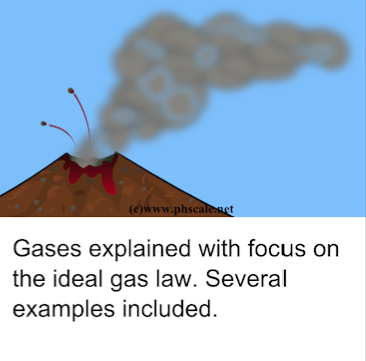 | Ionic Strength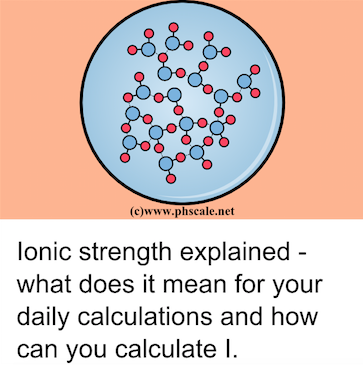 |
Example 2.
0.01gram of toluene(l) is injected into a 2 L tube at 293oKelvin. The toluene immediately evaporates. How many atmosphere of tolueneis now in the tube?
Answer:
Preliminary consideration: The molecular weight of toluene is 92.13 g/mol, so 0.01 g toluene is 0.000109 moles.
This is simple: we divide by V on both sides of eq. 1. The answer is 0.001304 atm.
Web references
An online calculater for the ideal gas law
A short but very precise explanation




